Can't win them all
Close wins. A blowout loss. The first three games represented the perfect microcosm of Royals baseball in 2022. Plus, a lot of Bobby Witt Jr.!
In game one of 2022, Bobby Witt Jr. won the game with his bat. In game two, he saved the game with his glove.
His debut series hasn’t been loud or flashy. He hasn’t gone on some sort of home run binge or tears where he’s reached base seven times in a row (how good has Steven Kwan been this series?). Instead, Witt has just been at the right place at the right time and impacted both games like a pro. Do the Royals win either game without Bobby Witt Jr. on the roster? The answer to that question tells you all you need to know about how his first two games have gone.
This is where I need to rewind myself. My goal with this newsletter is to provide clear-eyed analysis of the Royals. There will be good. There will be bad. There will be times when the write-up is fun. Other times, it will be a chore. Basically, I don’t want to get carried away and caught up in something that would prevent objective analysis.
Holy moly, Witt is not making it easy.
Watching this live, I have to admit that I did a sports yell. Watching this gif, I did it again. And again…
By now I’ve watched this replay more than Jim Garrison has viewed the Zapruder film. This Witt replay may be just as valuable to Royals historians in the future.
Let’s break this down.
The infield alignment for the Royals is in at the corners and at double play depth up the middle. Witt is positioned about a step in front of the baseline between second and third, a few steps off the line.
The batter is Oscar Mercado. Mercado finished 2021 with a sprint speed of 28.9 feet/second. Broken out by several decimals, that would make him the 51st fastest runner in baseball last year. I would think that with the positioning of Witt almost level with the bag, the play on a sharp ground ball would be to attempt to turn two, despite Mercado’s superior sprint speed. Witt would also have the option of having the play in front of him, so he could, if Miller went on contact, go home. If the ball is hit to him, Witt will have to make a split-second decision to either try to start the double play or go home.
Except the ball isn’t hard-hit—it’s off the bat at a shade over 80 mph. And it’s hit to his right. With Witt playing in, the time he has to react is dramatically reduced. That he made it to his backhand in time to cleanly field the ball was impressive. I’m not sure where the defensive metrics would grade the act of making certain the ball was in the glove, but it has to be a high degree of difficulty. They don’t call it the hot corner for nothing.
With the ball safely in the glove, that’s the first part of this play. For the next, I’ll cede the analysis here to Trevor Plouffe.

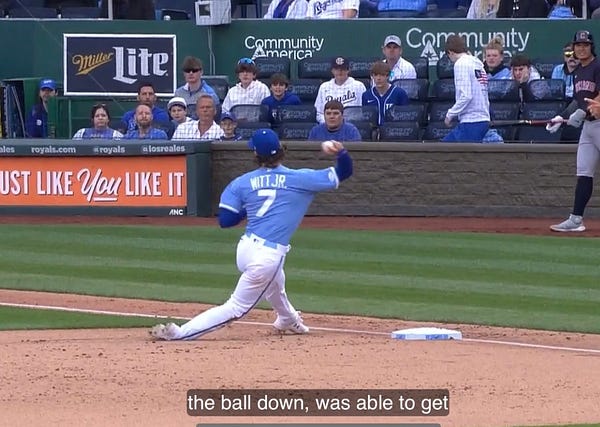

Plouffe notes that Witt could be late with his throw if he attempts to get back to his feet. Again, Witt’s awareness of the situation comes into play with Owen Miller on base. Miller is faster than Mercado, with a sprint speed in 2021 of 29.1 feet/second. According to Baseball Savant, that was the 42nd fastest time in the majors last year.
I wonder what Miller was thinking in the moments after he was the second out of the inning.
Back to the play…Witt didn’t have time to think about his decision and he didn’t have time to set up for proper execution. YET HE STILL MADE THE PLAY.
Avoid the temptation to speak ill of the throw. Yes, there wasn’t much on it. Yes, it was off line. However, that’s beside the point. As Plouffe noted, it was pure athleticism that allowed Witt to pull off the improbable. The purpose of the throw was simply to get it to home plate. Once Witt released the ball, he was putting his faith in Salvador Perez to receive it and place the tag.
Speaking of Perez…He deserves a ton of credit for finishing this. Witt two-hops the ball on the throw and it’s up the first base line. That means Perez has to backhand a short hop just to catch the ball. His momentum is going away from home plate when the ball settles into the leather. Perez still has the quickness to not only swipe the glove to apply the tag, he rotates his wrist to ensure that when his glove hits Miller sliding home, the ball is not in danger of popping out.
There aren’t enough superlatives for what we saw on Saturday afternoon in the tenth inning. If this was October, we’d be talking about this play for years. That it happened to be the second game of Witt’s major league career, we’re probably going to be talking about it for quite some time anyway.
Extra inning chicanery
I loathe the rule that puts a runner on second base in extra innings. Exhibit A was Saturday (although without that rule, the play I just spent several hundred words dissecting wouldn’t have happened). This runner on second upends the rhythm of the game. This was a well-pitched game on both sides where each team had four hits through nine innings and limited chances. Mileage varies, but I greatly enjoy games like this where it feels as if the outcome hinges on one moment…and we have no idea when that moment is coming. It was left to the bullpens. Which team’s relief corps would crack first? The runner on second is an artificial enhancement that has a very real outcome.
Having said that, the Royals once again profile as a team set up for extra inning success. They were able to pinch run Kyle Isbel in their half of the inning. Hunter Dozier wisely decided that one sacrifice attempt was more than enough in 2022 and swung away. Vance Wilson, coaching third, held Isbel which was the correct decision, given the Royals had nobody out in the frame.
They had three chances to put this game away. They only needed one.
That set it up for yesterday’s phenom, Adalberto Mondesi to come through with his first career walkoff hit. Mondesi also made a key defensive play in the top half of thee 10th that saved a run. The things that get overshadowed by Witt…
Maybe playing for extra innings is smart Royals strategy.
Keller channels 2020
Perhaps lost in Saturday’s late-inning heroics, Brad Keller pitched a fine ballgame that called back to the success he had two years ago.
Keller’s slider was a bit more firm than we’re used to seeing. He was throwing it harder than he has in the past—he averaged 87.7 mph on the pitch on Saturday—but it was spinning about 150 RPMs less. The result was a vertical break that was 36.6 inches of drop according to Baseball Savant. Keller typically gets above 40 inches of drop on his slider. But the way the ball spins coming out of Keller’s hand, it looks like it’s supposed to have more horizontal run. The drop is something that catches the hitters off guard when they pick up the spin.
Something like this…
Keller tallied four whiffs on the slider and another four on the four-seamer that was running at about 95 mph on average. Both pitches played beautifully off each other.
The fastball was really elevated and while the slider was occupying the middle of the zone (again, the lack of horizontal run), he kept the pitch down. Six ground balls were hit for outs against three fly balls and Keller didn’t surrender an extra-base hit. He threw a strike to 15 of the 19 batters he faced.
It was the 2020 vintage Keller out on the mound. A promising start to be sure.
Packing the flamethrower
The Royals bullpen on Saturday worked four innings, allowed three hits, walked none and struck out five. Dig this heat:
Power and efficiency. This bullpen has the chance to surprise some people. Plus, how great was it to see Staumont come so close to triple digits?
The Class of ‘18 is in danger of flunking out
Again, and I can’t stress this enough, it’s important that we limit the overreactions to the first three games of the season. Still, this pitching box score from Sunday’s debacle really stood out.
Three Royals pitchers got lit up against the Guardians. All three are from the celebrated pitching draft class of 2018.
If you tuned in to the game to see Kris Bubic unveil his new slider, it was a no-show. Literally. He didn’t throw it. Not that he had the opportunity, sticking around for only five batters. In his abbreviated afternoon, Bubic got Guardian hitters to swing nine times. The result was four balls in play, five fouls and no whiffs.
Bubic will tell you, locating the fastball is key to his success. He had zero control on Sunday and his secondary pitches were all over the place.
He was in the middle of the dish too frequently with his 90 mph fastball. That’s going to get hit. And when he’s not hitting spots with his change and curve, those pitches are easy takes.
His linescore looks worse given he left the game with the bases loaded and Taylor Clarke unloaded them by serving a grand slam to Mercado. Jackson Kowar can’t really offer a similar excuse.


You really don’t want to be mentioned in the same Tweet as Vin Mazzaro. Ever.
Sixteen Guardian batters put the ball in play against Kowar. Eight of them hit the ball harder than 95 mph, earning them a “barrel.” A 50 percent barrel rate? Still not as bad as being mentioned in a tweet with Mazzaro, but really not good.
And Singer was Singer. Sixty pitches to get nine outs with a bunch of hits and runs thrown in the mix.
So while the Royals took a deserved victory lap for having five pitchers from the 2018 draft playing in the big leagues in 2021—including their first four selections—the results have put quite the damper on any celebration.
Singer has been the most successful of his class, being the first to pitch in The Show and posting a 3.0 fWAR in the first two seasons of his career. Bubic owned a 0.8 fWAR through 2021 while Kowar brought up the rear at -0.3 fWAR.
All of these pitchers have major league experience and all have looked stagnant since arriving. There have been little signs of progress. These guys have all rocketed through the minor league system and the alternate site set up due to the Covid shortened 2020 season, and when they arrived in Kansas City the results have been mostly underwhelming. The heat absolutely has to be on pitching coach Cal Eldred specifically and the organization as a whole. Their track record of developing starting pitching has been less than stellar. If there is no positive movement in 2022, not only will that set The Process 2.0 back, it will beg the answer to some questions I don’t know the organization is comfortable asking…such as who is accountable for the failure to develop starting pitching?
Again, it’s one game out of 162. The season is long and honestly, there will be days like this. But we’ve seen parts of this movie before. And we know how it usually ends.
All eyes on Daniel Lynch in his start in St. Louis on Tuesday.




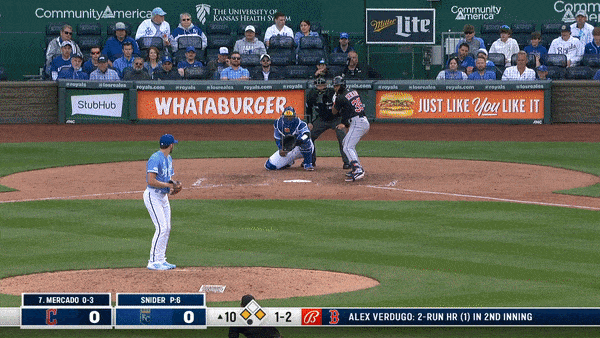





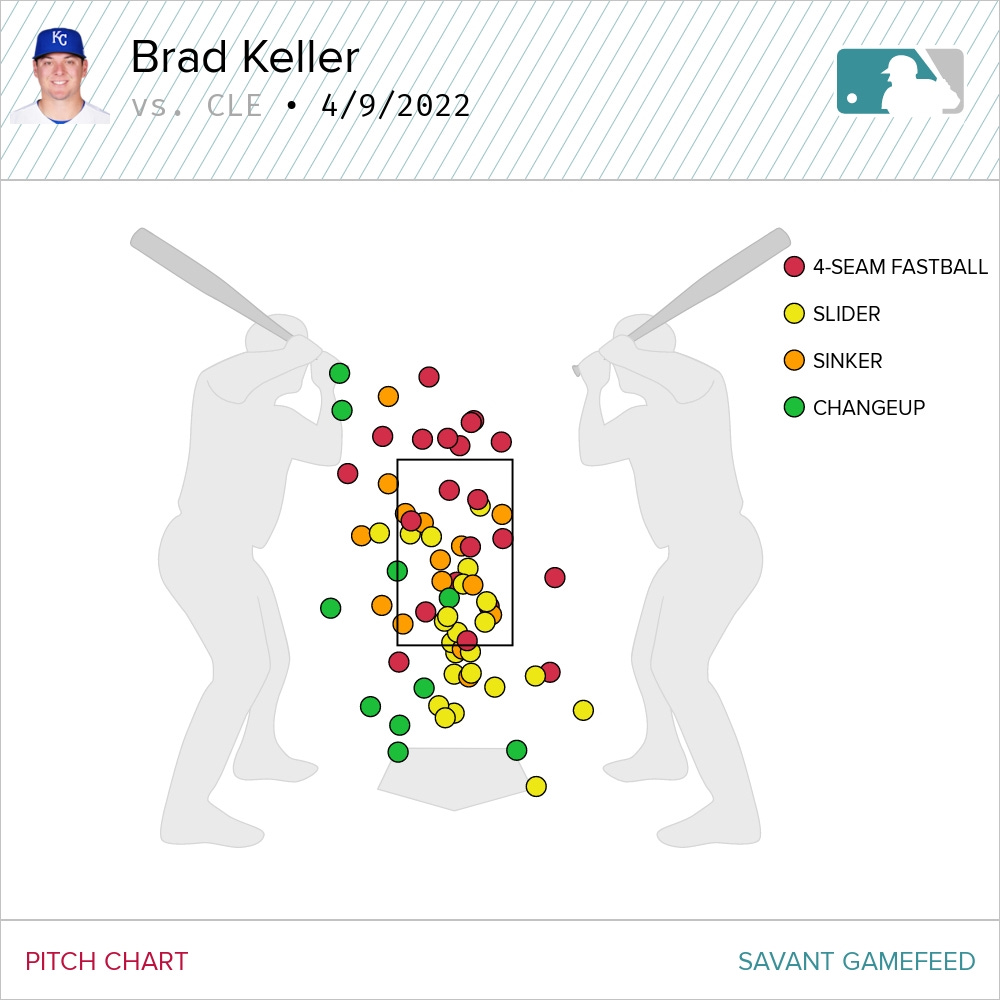
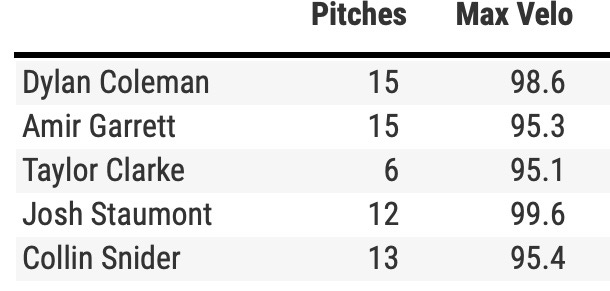
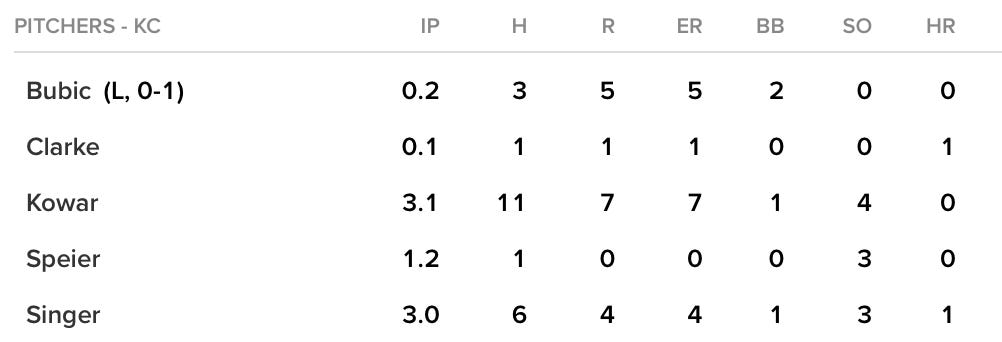
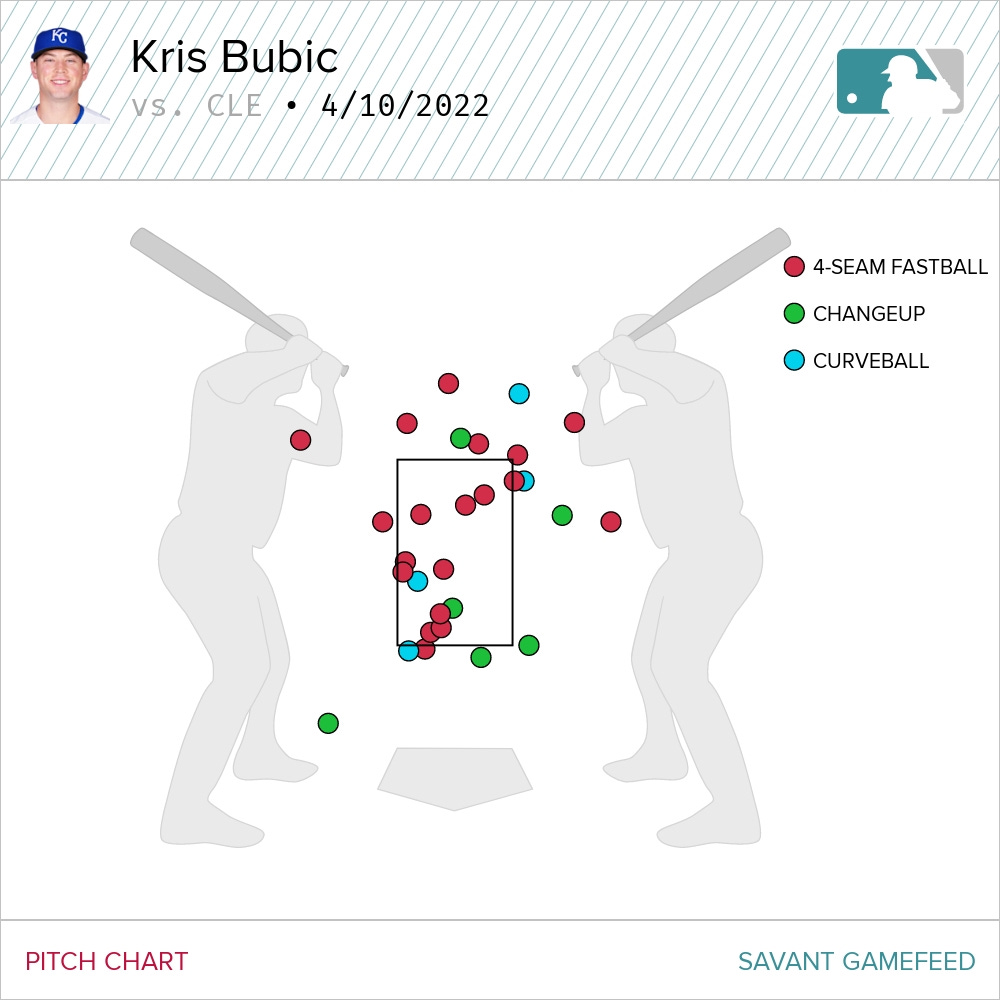
I don't know if Eldred has a good friend some where in the Royals organization, but Eldred should have been gone last year. The young pitchers seem to succeed at AAA. I would like to see them promote Omaha's pitching coach and see if he could help any.
I am not surprised that pitching was an area of need. But Sunday was beyond what I expected. I did anticipate a bit more from the hitting side too. But it is day 4...deep breath...its ok.